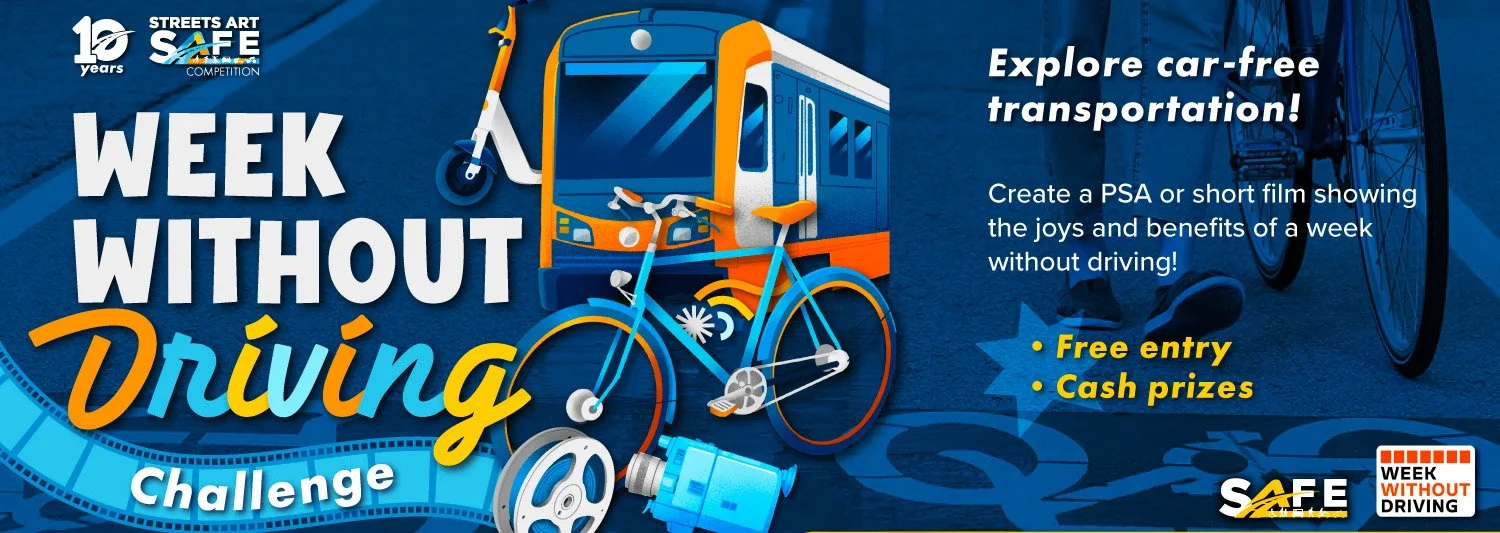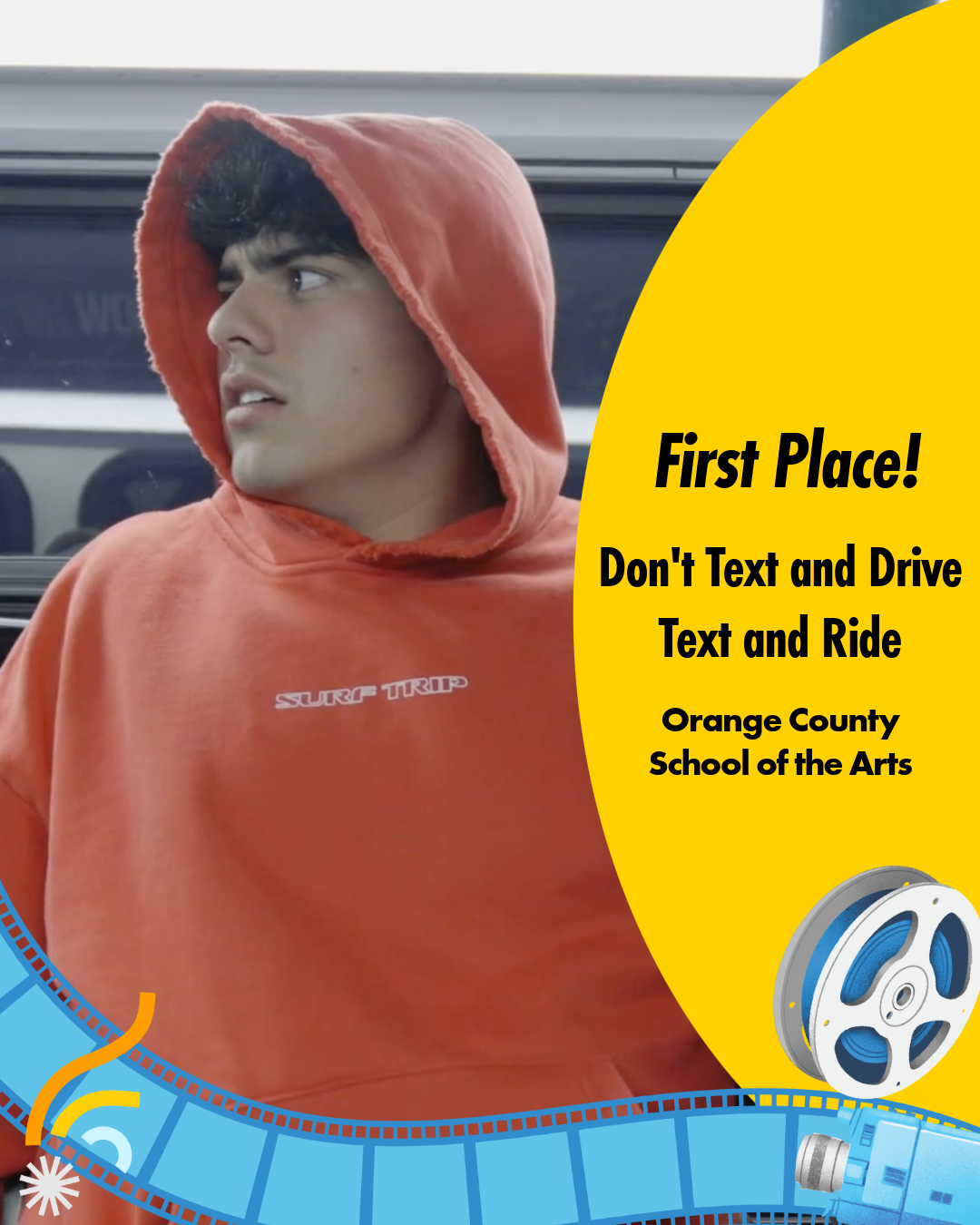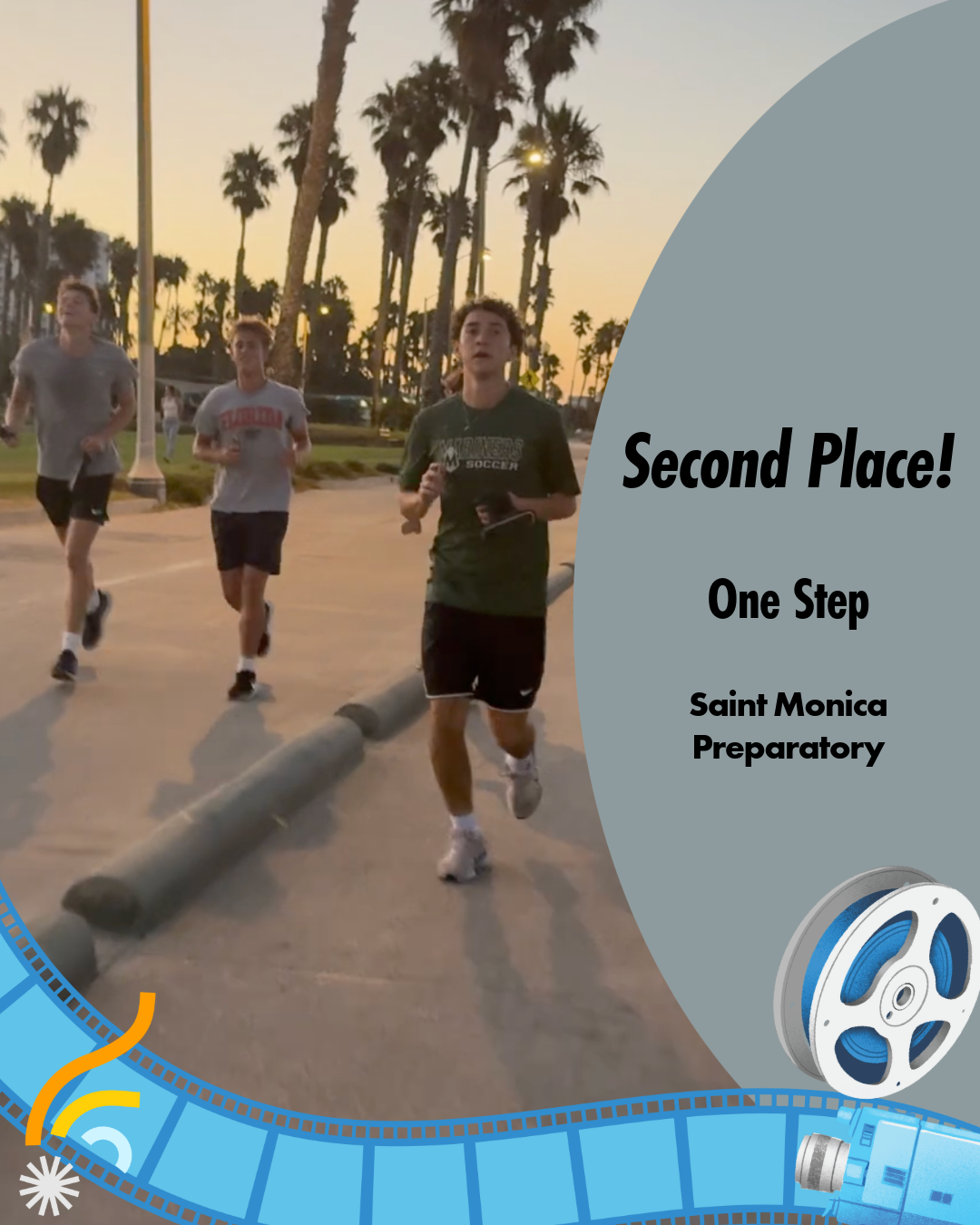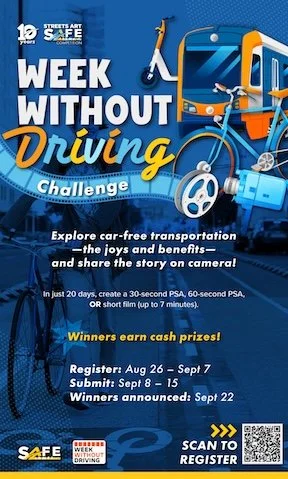A Streets, Art, SAFE Challenge gives a set, short period of time to create a Public Service Announcement (PSA) based on a provided topic. It’s a fast-paced, real-world experience where you can sharpen skills and bring creative ideas to life in a deadline driven scenario.
Challenge Winners!
Are Announced!
Click the image to see the PSA!
Click the image to see the PSA!
Click the image to see the PSA!
About The Challenge
The A Week Without Driving Challenge is a brand-new short contest launching in preparation for 2025’s Week Without Driving! This creative challenge invites you to explore a week without driving—and tell that story on camera.
This is a fast-paced challenge that gives you 3 weeks to produce an original PSA on the theme of life without a car.
Entries can be either a 60 second PSA or a short film up to 7 minutes in length.
As the name suggests, PSAs should be focused on alternative modes of transit other than driving a car—highlighting the joys and benefits of life without a car.
The challenge will come with its own cash prizes.
Each PSA is to include the 3-4 second end-screen, which will be provided by SAFE.
Challenge Schedule
August 2025
August 26th - Registration opens.
September 2025
DATES EXTENDED!
September 14th - Registration closes
September 15th - Final submissions open
September 22th - Final submissions close
September 29nd - Winners announced
Rules and Guidelines
The word "accident" is not a term to be used in reference to traffic incidents. It makes them sound “inevitable” and, by implication, not preventable when, in fact, they are. Instead, neutral terms such as "collision" or "crash” should be used.
In making your PSA, the laws of your area must be followed, and no lives must be endangered. This includes wearing a helmet if you are portraying riding a bike, e-bike, scooter, or skateboard.
Your PSA may not contain language or content that would prohibit it from being aired on national television.
PSAs must be non-discriminatory. They may not portray any particular ethnicity, gender orientation, or religion in a negative light. Be kind and inclusive in your creations.
Film PSAs are to be either:
i. a 30-second PSA
ii. a 60-second PSA or
iii. a short film (up to 7 minutes in length)
including a 3-4 second closing graphic with a SAFE logo and acknowledgement to program sponsors (provided by SAFE).PSAs are to be original content. If they contain borrowed footage, photos, music, lyrics, etc, permission must be attained for their use, with that permission sent to Streets, Art, SAFE. By sending in your submission, you are agreeing that you have the rights to all footage, music, lyrics, etc, or have secured permission for their use.
AI-generated elements are allowed, but only when the human artist is the primary creative generator of the assets and elements used in the PSA. AI may be used for brainstorming, generating initial concepts, or as a tool within a broader, human-driven creative process. The final piece must reflect the artist’s vision and originality. Submissions that are primarily AI-generated with minimal human input will not be accepted.
It is encouraged for students to compete in teams. They are allowed to compete individually if they choose, but only on one submission. Each student may contribute in any way they can: whether through scriptwriting, editing, acting, photography, font design, or other functions. It takes a team!
Step 1 - Topic
The first step is to decide what you want to learn about and make a PSA on!
Your topic should focus on alternatives to driving—highlighting the joys and benefits of a week without driving.
These benefits could include:
Physical health
Mental health
Helping the planet
Think along the lines of: “What if getting around didn’t require driving a car?” or “What’s cool and joyful about not having to drive?”
Alternative transportation options include:
Getting around by bicycle or e-bike
Getting around by walking
Getting around on a scooter or skateboard
Traveling by public transit—bus, train, and/or light rail
Any combination of the above
Examples of PSAs you could create:
Documenting your week without driving
Interviewing people about the joys of living car-free
Creating a satirical PSA
Making a music video
Producing an animated film
(See more examples at the end of the section “Write Your Treatment” below.)
Step 2 - Write Your Treatment
Once you’ve picked your topic, write a treatment for your film.
A treatment is a short written description of your project. It is not the script. It explains what the audience will see and hear in your film. In the movie world, treatments are used to share ideas so others might want to work on them or help make them.
A good treatment explains:
What happens in the story
How the film will look and feel
Who the main people or characters are (if there are any)
For a 30-second PSA, one short paragraph is enough.
Your treatment should say:
Why you want to make this film
What happens in the story and how it ends
Who or what it’s about
Where it happens
How you want the audience to feel or react
Keep it clear and interesting so people can picture your idea and get excited about it!
Example Treatment #1
Title: One Week, No Car
This 30-second PSA opens with a teen tossing car keys onto a table and saying, “One week—no driving.” Quick clips show them riding a bike to school, walking to meet friends, and taking the bus to the movies. The shots are upbeat and colorful, set to lively music. At the end, the teen smiles into the camera and says, “Turns out, I didn’t miss the car at all.” The screen fades to bold text: “Discover the joy of going car-free.” The goal is to show that a week without driving can be fun, freeing, and possible.
Example Treatment #2
Title: What I Gained Without Driving
This 30-second PSA begins with a split screen: on one side, a teen sits in traffic looking frustrated; on the other, the same teen rides a skateboard down a sunny street, smiling. The film cuts to quick clips: laughing with friends on the bus, noticing street art while walking, and enjoying music while biking. The final shot shows the teen saying, “One week without driving—what I lost in gas money, I gained in experiences.” The screen ends with text: “Life is bigger when you’re not stuck behind the wheel.” The goal is to highlight the unexpected joys of a car-free week.
Step 3 - Registration
To participate in The SAFE Week Without Driving Challenge, teams must complete the official registration form by September 14th.
What you’ll need:
Team members' names and (optional) contact information for the project director
If competing as part of a school or class: sponsoring teacher/club coordinator and contact information
Your PSA working title and treatment.
Once you’re registered, you’ll receive an email confirming your registration and the approval of your treatment.
Step 4 - Make Your PSA!
Starting August 26th, you will have 3 weeks to complete your PSA film.
Once you register, begin by writing your script and creating a storyboard. After that, move on to producing your PSA just be sure to follow the competition rules and guidelines along the way!
Most importantly, have fun and be creative!
Step 5 - Final Submission
All final projects must be submitted no later than September 22nd.
Before submitting the completed PSA, complete the online submission form, which includes uploading your final video and confirming that all required documents and permissions are in place.
Awards and Prizes!
There are 3 awards for this challenge:
Best Week Without Driving PSAs:
Gold
Silver
Bronze.
Gold, Silver and Bronze prizes will include:
Cash awards!
Certificates.
Featured on SAFE; Streets, Art, SAFE; and community partners’ social media.
Featured on SAFE’s website.
Screening at the 2026 Streets, Art, SAFE Awards Ceremony.
Go to the next section—Judging Criteria—to find out how to win!
Judging Criteria - How to Win!
As with the overall Streets, Art, SAFE competition, we will have two types of judges.
Film industry specialists who will judge the following categories. They give each PSA a score of 1 to 5 in each.
Creativity and Originality
Including best use of a category of PSA: reenactment, testimonial, celebrity, satire.Strength of tagline/messaging
A PSA should leave a memorable lasting impression on the audience through its message.
Cinematography
Camerawork and lighting.
Editing
Acting
Production design
Everything that appears in front of the camera - such as sets, props, costumes, location, etc.Sound
Sound effects, production audio, music, etc.
Transportation and safety experts judge the PSAs on the following categories. They give each PSA a score of 1 to 5 in each.
Research and accuracy of stats and/or facts, or accurate portrayal of a situation (such as in the case of a testimonial PSA).
Effectiveness of the message.
Did the PSA leave a memorable lasting impression.
Emotional Impact of the message.
How likely is the message to influence the viewer to change behavior?
How likely they are to re-watch or share the PSA with others?
Questions?
Reach out to Constanza Berber—the Streets, Art, SAFE Program Coordinator—if you have any questions about this special challenge.
We hope you enjoy this opportunity and welcome your feedback on how it goes!






